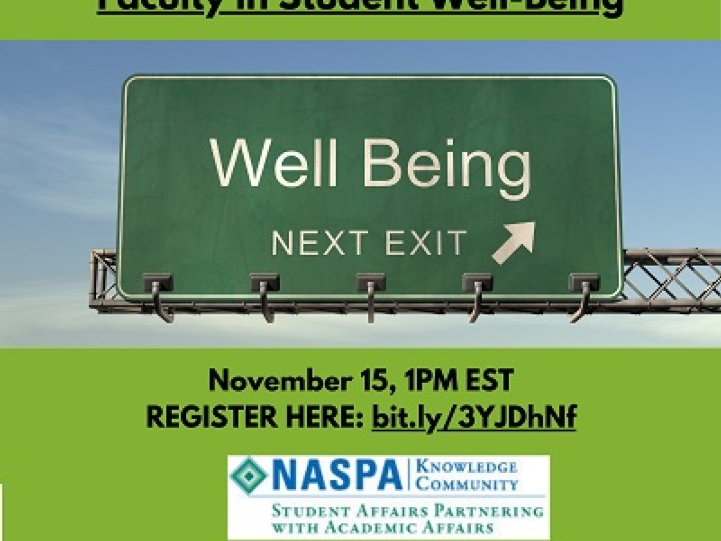
Strategic Initiatives for Engaging Faculty in Student Well-Being
Student Affairs Partnering with Academic Affairs Wellness and Health Promotion
November 16, 2024
Student well-being is essential for academic success, and faculty play a pivotal role in creating a supportive environment for their students. Our recent webinar, hosted by experts in health promotion and student affairs, explored how partnerships between academic and student affairs can lead to innovative strategies that prioritize health and well-being. Here are the key takeaways from this insightful session:
Why Faculty Partnerships Matter
Faculty often have the most direct influence on students' academic and personal lives. The webinar highlighted how embedding well-being practices into academic spaces, such as syllabi, classroom culture, and policies, can enhance both student performance and mental health. These strategies help create a holistic educational experience that addresses students' needs beyond the classroom.
Key Strategies for Faculty Engagement
-
Understanding the Foundations
Using frameworks like Maslow's hierarchy of needs, presenters emphasized that students cannot reach their full potential without addressing basic needs like food security, safety, and belonging. Faculty can support these needs by fostering a welcoming and inclusive environment. -
Incorporating Well-Being into Academic Policies
Examples like Oregon State University's inclusion of mental health resources in course syllabi demonstrated how small changes can have a significant impact. A “Reach Out for Success” statement encourages students to seek help and normalizes conversations about mental health. -
Scaling Small Successes
Panelists emphasized the value of starting small—one faculty member, one course, or one pilot program—and scaling up from there. This approach allows for iterative improvements and builds buy-in across campus. -
Leveraging Data for Advocacy
Data-driven initiatives were key in driving policy change. For instance, tracking the impact of well-being-focused syllabi and student training modules helped demonstrate the tangible benefits of these programs. -
Faculty Empowerment Through Actionable Tools
The webinar also addressed faculty concerns, such as time constraints and lack of training, by offering low-effort, role-appropriate strategies for supporting student well-being. Practical steps included adjusting course policies to promote flexibility and embedding mental health resources directly into academic materials.
Building a Collaborative Campus Culture
A recurring theme was the importance of cross-functional collaboration. Partnerships between student affairs professionals, faculty champions, and even student leaders can drive meaningful change. As one presenter noted, “It takes a village—and our faculty are a critical part of that village.”
Take Action Today
This webinar offered a wealth of actionable advice for fostering a culture of well-being on campus. From integrating mental health resources into everyday academic practices to engaging faculty as partners in health promotion, the session provided a roadmap for creating systems-level change.
Watch the full webinar here: https://youtu.be/JTE91JjuRmc
Start small, dream big, and join us in building campuses where students can thrive academically, emotionally, and socially.